William Worthington Fowler (1833-1881), Ten Years in Wall Street; or, Revelations of Inside Life and Experience on Change. Illustrated by Arthur Lumley (1837-1912). (Hartford, Conn.: Worthington, Dustin, 1870). Added title page engraved by John Filmer. Other engravers include George Wevill & George Hammar, Charles Spiegle, and Kingdon & Boyd. Arts Collection (GAX) Hamilton 1815
Recently in Illustrated books Category
The German artist Hans Sebald Beham (1500-1550), who often went by Sebald Beham or HSB, grew up in Nuremberg during a time of political unease. The Nuremberg council actively sought out prints that might be considered propaganda or printmakers who might be religious agitators. Sebald, his brother Barthel (1502-1540), and their colleague George Pencz (1500-1550) were nicknamed the “Godless Painters” when they were brought to trial for atheism, specifically a disbelief in transubstantiation. All three were expelled from Nuremberg, only to return after about ten months.
Sebald was chiefly recognized for his small engravings in the style of Albrecht Dürer (1471-1528), the undisputed superstar of the era, but this similarity also brought him trouble. When Hieronymus Andreae (ca.1500-1556) hired Sebald in 1527 to illustrated a Lutheran prayer book and several other projects, the two were accused of plagiarizing Dürer and Sebald was once again forced out of Nuremberg.
Settling in Frankfurt, Sebald produced nearly 2,000 prints during his career. The same year he engraved the putti above, he was also one of several artists responsible for the woodcuts used in the first Paris Bible to contain illustrations in the Renaissance style, as recognized by bibliographer Ruth Mortimer. She writes, “The first three Old Testament cuts are based on Holbein blocks common to the Dance of Death and Icones sets; the remainder of the Old Testament illustration derives chiefly from a series by Hans Sebald Beham.” (French 16th century books GA Z881 .H346)
For more, see Gustav Pauli (1866-1938), Hans Sebald Beham: ein kritisches Verzeichnis seiner Kupferstiche, Radierungen und Holzschnitte (Strassburg: J.H.E. Heitz, 1901). Marquand Library (SA) ND588.B4 P2
Francis Frith collaborated with a lecturer and scholar of antiquities at the British Museum, Reginald Poole, and with Poole’s mother, Sophia, to produce this mammoth album of photographs. It is interesting that at the same time, Sophia’s brother Edward W. Lane (1801-1876), a scholar of Oriental linguistics, was working with Reginald on an illustrated edition of the Arabian Nights (The Thousand and One Nights, a new translation from the Arabic, with copious notes by Edward William Lane; illustrated … by William Harvey; edited by his nephew Edward Stanley Poole, 1859. Rare Books (Ex) 2263.2869).
The Poole’s had spent over seven years living and working in Egypt, and were fluent not only with the languages of the region but the history and culture. Frith on the other hand made only three trips to the area—1856-57, 1858, and 1859—passing through some cities only once. His objective was to capture photographic images that could be reproduced in many formats and sold as widely as possible. In this, he certainly succeeded.
In the beginning, Frith contracted with Thomas Agnew and Son to sell individual prints made from 16 x 20 inch negatives and with James S. Virtue to publish groups of photographs in a series of albums. Negretti and Zambra handled the stereoscopic views sold both individually and in sets. In addition, Frith formed his own company, F. Frith & Co. to sell his own work and the photographs of others, specializing in scenic travel views, which were of great interest to the British public. Frith built the largest photographic archive in Great Britain and then, in the 1880s, handed the business over to his sons and moved to a villa along the French Riviera to write his memoirs.
To see more of Princeton’s holdings of Frith albums and photographs, continue below.
In 1731, the British printmaker John Baptist Jackson arrived in Venice and found work with printmaker Count Antonio Maria Zanetti. Jackson impressed his employer with images printed from multiple blocks, dramatically reproducing paintings and sculpture in a two-dimensional format. He went on to have success designing and cutting woodcuts for book illustration for various Venetian publishers. This came to an end when Jackson learned that some of his designs had been stolen and the blocks printed under another name.
Fortunately, he met the wealth British banker and bibliophile Joseph Smith (ca. 1674-1770) who offered Jackson several commissions for reproductive prints of works in Smith’s art collection. The last, completed in 1739, was a multi-block or chiaroscuro reproduction of Rembrandt’s Descent from the Cross (the painting now in the National Gallery of Art, London). The success of this print led his friends Charles Frederick and Smart Lethieullier to propose a larger series of chiaroscuro prints reproducing the great paintings of the Venetian masters.
The project took 4 ½ years, during which time Jackson proofed nearly 100 blocks to produce 24 plates after 17 paintings by such artists as Titian, Tintoretto, Veronese, Leandro da Ponte Bassano, Jacopo Bassano, and Francesco da Ponte Bassano. This was not the first or only such project Jackson attempted but it was the only one to be successfully completed and published in a large edition.
Jackson’s book brought the Renaissance process of chiaroscuro printing back into favor and in 1754, he published a technical manual entitled, An Essay on the Invention of Engraving and Printing in Chiaro Oscuro. In it, Jackson comments “… there is a masterly and free Drawing [in chiaroscuro], a boldness of Engraving and Relief, which pleases a true Taste more than all the little Exactness found in the Engravings in Copper plates..”
Princeton’s copy of Jackson’s book has been disbound and digitized. The prints can be seen in their entirely at http://diglib.princeton.edu/xquery?_xq=getCollection&_xsl=collection&_pid=jacksonprints
For more information, see: John Baptist Jackson (1701-1780): chiaroscuri dalla Collezione Remondini del Museo biblioteca archivio di Bassano del Grappa (Vicenza: La Serenissima, 1996) Marquand Library (SA) NE642.J13 M37 1996
Edmund Lodge (1756-1839), Portraits of Illustrious Personages of the Court of Henry VIII (London: John Chamberlaine, printed by W. Bulmer, 1812). Graphic Arts (GAX) 2009- in process
This is the second edition of 84 stipple engravings reproducing drawings by Hans Holbein, the younger (1497-1543), with biographical and historical descriptions by Edmund Lodge. It was Queen Caroline (1683-1737), who found the Holbein originals in a bureau at Kensington Palace and asked Richard Dalton (Keeper of the King’s drawings and medals) to have them copied and published. When Chamberlain took over Dalton’s position he also inherited the project. Chamberlain edited and published a folio edition of Holbein’s work in 1792, printed and issued in parts over the next 8 years by William Bulmer and Company, Shakespeare Printing-Office.
For the 1792 edition, Chamberlaine called on Francesco Bartolozzi (1725-1815), to prepare a set of prints. Bartolozzi had developed his own technique of stipple engraving with printed color to reproduce the look of chalk drawings, such as Holbein’s. The folio edition of Illustrious Personages was such a success that a large quarto edition was prepared in 1812 (seen here), using additional engravers working in the style of the elderly Bartolozzi, including Bourlier, Cardon, Cheesman, Cooper, Facius, Knight, Meyer, Minasi, and Nicholls.
Of the 84 portraits, 68 are identified by name. The last 12 could not be identified and are grouped at the front of the book without description. A letterpress index is included in the 1812 edition, seen on the left. In addition, portraits of Holbein and his wife serve as frontispieces to both editions.
Julia Margaret Cameron (1815-1879), Illustrations to Tennyson’s Idylls of the King, and other poems (London: Henry S. King, 1875). volume 1, 12 albumen silver prints. Graphic Arts Collection (GAX) Oversize 2007-0055F. Purchased with David H. McAlpin Fund of the Art Museum, Friends of the Library Fund, and the Elmer Adler Memorial Fund. 1974.



In the summer of 1874, Julia Margaret Cameron (1815-1879) was living next door to Alfred Lord Tennyson (1809-1892) at Farringford, Freshwater, on the Isle of Wight. Tennyson had taken “Morte D’Arthur” published in 1842 and expanded it into “Idylls of the King” in 1859. He asked Cameron to make illustrations for a new publication of these poems and she produced over 200 prints from wet-plate collodion-on-glass negatives. Unfortunately, the publisher chose only two to be reformatted as wood-engravings and even those did not reproduce well in the final book.
At Tennyson’s encouragement, Cameron went on to produce a book of her own with albumen silver prints interspersed with texts by Tennyson lithographed from Cameron’s hand-writing. The first volume appeared in January 1875 and the second in May, selling for six guineas. The frontispiece for each volume was a portrait of Tennyson dressed as “The Dirty Monk,” dated 1869.
Cameron wrote, “My aspirations are to ennoble Photography and to secure for it the character and uses of High Art by combining the real and ideal sacrificing nothing of Truth by all possible devotion to Poetry and beauty.”
The nineteenth-century French artist Godefroy Engelmann I (1788-1839) studied painting at the Académie des Beaux-Arts but turned his talent to printmaking when he was introduced to the new medium of lithography in 1813. On a trip to Munich, Engelmann purchased a press, stones, and all the equipment needed to set up a studio, which he did in Mulhouse, France, followed by presses in Paris and in London.
Engelmann excelled at color lithography which reproduced the look of chalk drawings and oil paintings for fine art prints. In his twenty years of production, he was responsible for most of the major technical developments of the medium, publishing two important treatises, Manuel du dessinateur lithographe (1822) and Traité théorique et pratique de lithographie (1835-40).
Engelmann’s son Godefroy II (1814-1897) joined the firm in 1837, and merged the business with the publisher Graf to form ‘Engelmann et Graf’. The firm quickly established itself as the leading company in France for the printing of facsimiles of illuminated manuscripts, such as this chromolithographic book of hours.
This tiny folded-paper book or parabaik (also spelled parabeik) came to the department with no attribution or provenance. It is untitled and constructed in the traditional Burmese/Myanmar manner, with the heavy paper cut and pasted into one long strip, then folded accordion style and attached to wood boards. The binding has an identical relief decoration on either side, ornamented with glass facets.
The hand-painted text, written in a round Burmese hand, forms circles around animal figures, astrological symbols, and runes. Although we do not have an expert on campus who has been able to translate this lovely volume, the characters do not appear to form complete sentences, but are perhaps the sounds or syllables that form magical chants or charms.
Untitled book of charms [parabaik], 20th century. Gift of Alfred L. Bush. Graphic Arts (GAX) 2009- in process


“Henry G. Allen and Co., 156 Fifth Avenue, New York, have just published Ancient Egypt or Mizraïm, a work begun seven years ago by Samuel Augustus Binion. It is profusely illustrated with colored plates and rich engravings and the edition de luxe is limited to 800 copies. The purpose of the book is to present the history of Egypt and Egyptian art, which will illustrate and describe the wonders of Egyptian architecture in the most thorough manner, and in size sufficiently large to enable the artist to give faithful restorations of the architecture, ornamentations, hieroglyphics, and decorations in their original colors and in form convenient for the private as well as the public library.” Publisher’s Weekly July 25, 1896.
What is Mizraim?
miz’-ra-im (mitsrayim): (1) A son of Ham, and ancestor of various peoples, Ludim, Anamim, etc. (Gen 10:6,13; 1 Ch 1:8,11). (2) The name of Egypt. The land of Ham.—cham, was another name for the land of Egypt. It occurs only in Ps 105:23,17; 106:22; Ps 78:51 probably refers to the land of Ham, though it may refer to the children of Ham. -James Orr, “Definition for MIZRAIM,” International Standard Bible Encyclopedia
This German printers’ manual describes an early 18th-century printing office. The shop, first owned by Michael Endter (fl. 1653-1662) and his family, was purchased by Johann Ernesti in 1717. As seen in the engraved frontispiece, Ernesti had two working presses. One is engraved with the dated 1440, for the beginning of printing, and the other 1730, to signify the printing of this issue of the manual. Nine men are working inside the shop setting the type, proofreading the copy, and printing the pages.
The manual begins with thirteen biographies and engraved portraits of early printers, including Laurens Janszoon Koster (ca. 1370-ca. 1440), Johannes Gutenberg (ca. 1398-1468), Johann Fust (ca. 1400-1466), Aldus Manutius (1449/1450-1515), Christophe Plantin (ca. 1520-1589), among others.
Over one hundred type specimens are introduced, including 47 Black Letter, 21 Roman, 14 Italic types, as well as Slavic, Greek, and Hebrew fonts. In addition, there are special calendar symbols, astrological signs, and engraved music fonts.
A Voyage To Laputa, Chapter 6. The Author proposes some Improvements which are honorably received.
I told him… the Bulk of the People consisted wholly of Discoverers, Witnesses, Informers, Accusers, Prosecutors, Evidences, Swearers…. The Plots in that Kingdom are usually the Workmanship of those Persons who desire to raise their own Characters of profound Politicians…to fill their Coffers with Forfeitures; and raise or sink the Opinion of public Credit.
It is first agreed and settled among them, what suspected Persons shall be accused of a Plot: Then, effectual Care is taken to secure all their Letters and other Papers, and put the Owners in Chains. These Papers are delivered to a Set of Artists, very dexterous in finding out the mysterious Meanings of Words, Syllables and Letters.
For Instance, they can decipher a Close-stool to signify a Privy-Council; a Flock of Geese, a Senate; a lame Dog, an Invader; the Plague, a standing Army; a Buzzard, a Minister; the Gout, a High Priest; a Gibbet, a Secretary of State; a Chamber pot, a Committee of Grandees; a Sieve, a Court Lady; a Broom, a Revolution; a Mouse-trap, an Employment; a bottomless Pit, the Treasury; a Sink, a C—-t; a Cap and Bells, a Favorite; a broken Reed, a Court of Justice; an empty Tun, a General; a running Sore, the Administration.
Full text in English: http://www.jaffebros.com/lee/gulliver/contents.html
Andrea Pozzo (1642-1709), Rules and Examples of Perspective Proper for Painters and Architects, etc. in English and Latin: Continuing a Most Easy and Expeditious Method to Delineate in Perspective all Designs Relating to Architecture, After a New Manner Wholly Free from the Confusion of Occult Lines… (London: Printed by Benj. Motte: Sold by John Sturt …, 1707). Graphic Arts Collection (GAX) Oversize 2007-0007F
Andrea Pozzo was a remarkable Italian painter and architect of the Baroque period. Known for his frescoes using illusionist perspective, Pozzo’s most dramatic work can be found in Rome in the painting of the dome, apse, and ceiling of the Church of S. Ignazio (1685-1694). As this project was being completed, Pozzo wrote down instructions for his particular technique of perspective in a manual entitled Perspectiva pictorum et architectorum, published in 1693.
As one of the earliest manuals on perspective for artists and architects, the book went through many editions and translations, from the original Latin and Italian into French, German, English, and, Chinese. The text was noted for the clarity and the precision of its explanations of perspective, making it accessible to architects and artists alike. A cherished volume in any library, Pozzo’s book has been called “the most elaborate and expensive architectural book ever produced ….”
The first English edition came in 1707 under the title Rules and Examples of Perspective Proper…, translated by the architect John James (ca. 1672-1746) and published by Benjamin Motte Sr. (died 1710). This edition has over one hundred folio engravings along with 208 historiated initials John Sturt (1658-1730). 161 subscribers are listed on an engraved plate bound into the final book, including many prominent artists, architects, printers, businessmen, and politicians.
Jake Zeitlin (1902-198) moved to Los Angeles in 1925 and in only two years, was operating one of the most popular bookstores in the city. Nicknamed At the Sign of the Grasshopper because of the symbol on the front, the shop became a local hangout for writers and artists, who browsed the shelves and enjoyed works of visual art in the shop’s small gallery.
One of the local artists Zeitlin introduced to the neighborhood was Paul Landacre (1893-1963) whose first one-man show was held at the bookstore in 1930 and received a favorable reviewed by Arthur Millier in Prints magazine. The Zeitlin’s and the Landacre’s became good friends and Paul’s wife Margaret even worked as a secretary for the bookshop.
When Zeitlin established his own publishing imprint, Primavera Press, Landacre was asked to illustrate many of the books. The first in 1933 was Marguerite Wilbur’s translation of Alexandre Dumas’ gold rush novel A Gil Blas in California. Pictured at the left is a recently acquired sheet of proofs for chapter headings in this book.
1933 was a busy year for Landacre, who submitted designs for the proposed Limited Editions publication of W.H. Hudson’s Green Mansions. Although some proof pages were printed by Grant Dahlstrom, the design was not selected and these chapter headings (top and bottom) were never published. Note, as Jake Wien below reminds us, that Landacre went on to illustrate three future editions for the Club.
For a bibliography of Primavera Press, see A Garland for Jake Zeitlin, on the occasion of his 65th birthday & the anniversary of his 40th year in the book trade (Los Angeles: Grant Dahlstrom & Saul Marks, 1967) Firestone Library (F) 0334.993.37
Today, new models of hardware are obsolute in a matter of years. It wasn’t until five years after his death that the first edition of Vittorio Zonca’s book on new machines was printed and published by Pietro Bertelli. Fourteen years later Bertelli’s son Francesco published a second edition using the same 42 copperplate engravings.
Three plates are signed: FV (i.e. monogram Francesco Valesio, born ca. 1560); Ben W sc (i.e. Benjamin Wright); and AH (or AHI or AI; monogram). The source for Zonca’s designs is believed to be a manuscript by the Sienese painter Francesco di Giorgio Martini (1439-1501), which includes illustrations of various fifteenth-century machines.
A good article about such books: Alexander Keller, “Novo Teatro di Machine et Edificii,” Technology and Culture (1988), p. 285-87. Firestone Library (F) 9030.898.
Other volumes in Princeton libraries of the “Theater of Machines” genre:
Jacques Besson, Theatrum instrumentorum et machinarum Iacobi Bessoni Delphinatis, mathematici ingeniosissimi (Lugduni: Apud. Barth. Vincent. …, 1582). 60 engravings by Jacques Androuet du Cerceau (fl. 1549-1584) and others. Rare Books (Ex) Oversize 9008.175f
Gaspard Grollier de Servière (1677-1745), Recueil d’ouvrages curieux de mathematique et de mecanique, ou, Description du cabinet de Monsieur Grollier de Serviere (Lyon: Chez David Forey …, 1719). Engravings Étienne Joseph Daudet (1672-1730). Graphic Arts Collection (GA), 2007-3659N
Jacob Leupold (1674-1727), Theatrum machinarum… (Leipzig: Druckts Christoph Zunkel, 1724-1788). MICROFILM 03959
Agostino Ramelli (1531-ca. 1600), The Various and Ingenious Machines of Agostino Ramelli, translated from the Italian and French … by Martha Teach Gnudi (Baltimore: Johns Hopkins University Press, 1976). Rare Books (Ex) Oversize Oversize TJ144 .R313q
Johann Vogel (17th/18th century), Die moderne Baukunst (Hamburg: B. Schiller, 1708). Marquand Library (SAX): Oversize TH144 .W63 1708q
Here is a short excerpt from one of his speeches:
I had fallen, O, how low ! In the very depths of my desolation, wife and children had been torn from my side. In the midst of thousands I was lonely, and, abandoning hope, the only refuge which seemed open for me was the grave. …Despair was my companion, and perpetual degradation appeared to me my allotted doom. I was intensely wretched ; and this dreadful state of things was of my own bringing about. I had no one but myself to blame for the sufferings that I endured ; …Such was my pitiable state at this period—a state apparently beyond the hope of redemption. But a change was about to take place—a circumstance which eventually turned the whole current of my life into a new and unhoped for channel.
Gough also wrote in support of others, such as his introduction to Ann Eliza Young (born 1844), Wife No. 19, or the Story of a Life in Bondage: Being a Complete Exposé of Mormonism, and Revealing the Sorrows, Sacrifices and Sufferings of Women in Polygamy (1876). Princeton owns no less than five copies of this book, including one you can check out: Firestone 1226.987
Gough died on stage in Pennsylvania in 1886.
Le donne, i cavallier, l’arme, gli amori, / le cortesie, l’audaci imprese io canto.
Of wives and ladies, knights and arms, I sing, / of courtesies and many a daring feat.
Ariosto began work on his epic poem Orlando Furioso (Mad Orlando) at the age of 32. He continued to expand and polish it over 16 years before it was finally published in 1532, a year before his death.
The plot revolves around the conflict of the Christian versus the Moor, the war between the Holy Roman Emperor, the King of North Africa, and the King of Spain. It is a continuation of Matteo Maria Boiardo’s romance Orlando Innamorato (Orlando in Love), although it can be read on its own.
The poem is divided into forty-six cantos, each containing a variable number of eight-line stanzas. The complete work is 38,736 lines long, making it one of the longest poems in European literature. It was also one of the most celebrated narrative poems of the Italian high Renaissance.
Princeton owns sixteen illustrated editions of Orlando Furioso. One of the most elaborate is this 1584 edition with 64 full-page engravings by the Venetian artist Girolamo Porro (1520-1604). In addition, the argomento or theme that introduces each poem is set inside a classical cartouche.
Also recommended is the 1879 French edition, Roland furieux: poème héroïque, illustrated by Gustave Doré (1832-1883). Rare Books (Ex), Oversize 2004-0064F.
Princeton University library is the fortunate new owner of 84 books, 54 broadsides, and several hundred pieces of printing ephemera handset, hand-printed, and mostly hand-bound by the Mexican master printer Juan Pascoe at the Taller Martín Pescador.
Born in Chicago in 1946, Pascoe was educated in the United States, while spending vacations at his father’s home in Mixcoac, outside Mexico City. He learned the art of letterpress printing at the age of 25 as an apprentice to Harry Duncan at the Cummington Press in West Branch, Iowa. When Pascoe moved full-time to Mexico in 1973, he set-up a print shop with a renovated nineteenth-century R. Hoe Washington handpress and sets of Spectrum and Garamond type, with Castellar for titling and initials. In 1975, Pascoe established his own imprint, named the Taller Martín Pescador (Kingfisher Workshop) at the suggestion of the writer Roberto Bolaño.
From the beginning, Pascoe set all the type by hand, inked and printed each page, and personally sewed each quire into their unpretentious paper covers. As his reputation grew, the projects became more elaborate but the technology remained the same. Authors published at the press include some of the major name in Latin American literature such as Octavio Paz, Gabriel Garciá Márquez, Efraín Huerta, Juan José Arreola, Roberto Bolaño, José Luis Rivas, and Francisco Segovia.
Since 1981, Pascoe has worked in a shop outside Tacámbaro, Michoacán. After years researching and published texts on the history of Mexican typography and printing, Taller Martín Pescador has become the foremost source for traditional Mexican graphic arts as well as innovative Latin American literature and poetry.
For more information, continue below.
Ariwara Narihira (825-880), 伊勢物語 (Ise monogatari or Tales of Ise) [S.l. : s.n., 慶長戊申 i.e. 1608?]. Second edition. Graphic Arts (GAX) 2008- in process.
“In 1593, in the wake of the Japanese invasion of Korea, a printing press with movable type was sent from Korea as a present for Emperor Go-Yōzei. …The printing press may have been offered to the emperor more as a curiosity than as a practical invention, but that same year he commanded that it be used to print an edition of the Confucian Kobun Kokyo (Classic of Filial Piety). Four years later, in 1597, a Japanese version of the Korean printing press was built with wooden instead of metal type, probably because of the difficulties of casting; and in 1599 this press was used to print the first part of the Nihon Shoki (Chronicles of Japan).
By this time printing was developing into the hobby of the rich … and many editions began to appear. These editions, associated with Emperors Go-Yōzei and Go-Mizunoo and with such figures as Toyotomi Hideyoshi and Tokugawa Ieyasu, were intended for presentation and not for sale. The finest printed books of the time were designed by the artist Hon’ami Kōetsu (1558-1637)… [and] the masterpiece of this press was the illustrated edition of Ise Monogatari (Tales of Ise) published in 1608.”
from Donald Keene, World Within Walls: Japanese Literature of the Pre-Modern Era, 1600-1867 (New York: Holt, Rinehart and Winston, c1976) East Asian Library (Gest): Western, PL726.35.K4
Complete digital book: http://digitalgallery.nypl.org/
Complete text, see: http://etext.lib.virginia.edu/japanese/

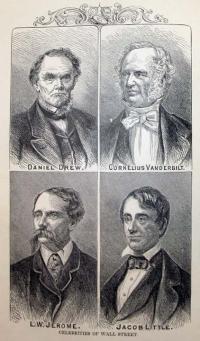

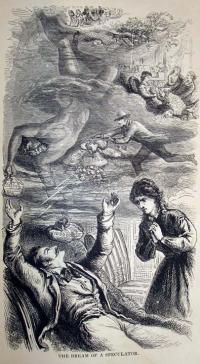
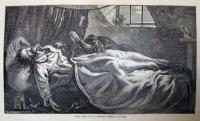










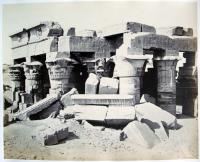





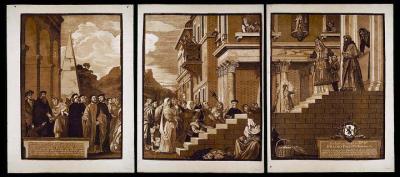

















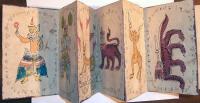





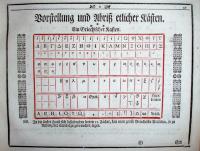






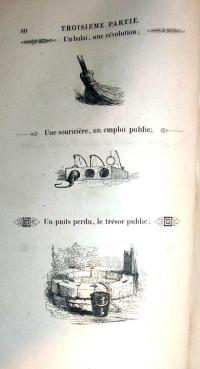





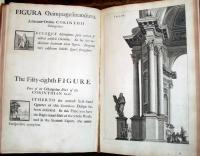
















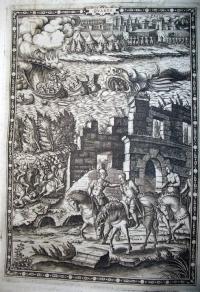






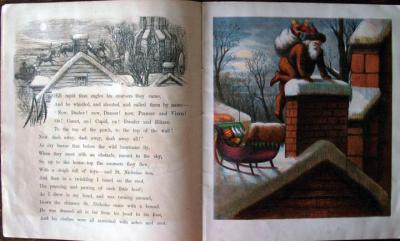












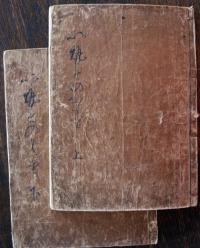




Recent Comments